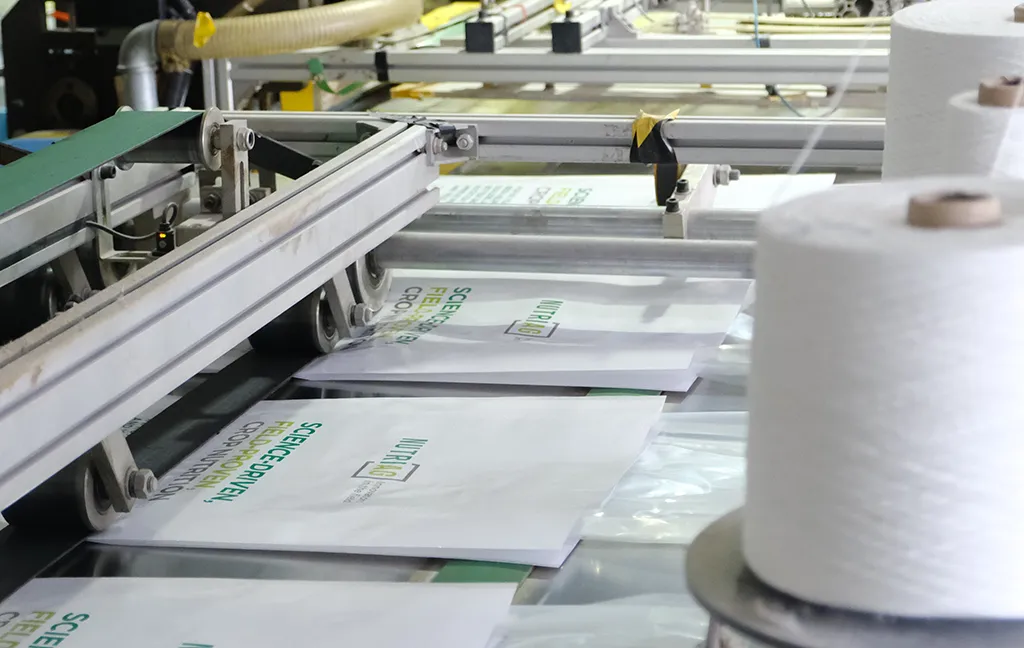
This article answers three pivotal questions for industrial buyers: (1) How do composite woven bags and aluminum foil bags differ in functionality and applications? (2) What advancements in sustainable manufacturing set VidePak apart? (3) Why do global clients trust VidePak’s 30+ years of expertise? With 568 employees, 100+ circular looms, and a 2MW solar power system reducing carbon emissions by 1,200 tons annually, VidePak combines innovation with eco-responsibility. We produce 8 million composite bags monthly, serving industries from agriculture to electronics.
1. Material Comparison: Composite Woven vs. Aluminum Foil Bags
1.1 Structural Composition and Performance
Composite woven bags are crafted from polypropylene (PP) tapes laminated with BOPP or kraft paper, while aluminum foil bags integrate aluminum layers for enhanced barrier properties. Key differences:
| Feature | Composite Woven Bags | Aluminum Foil Bags |
|---|---|---|
| Material Layers | PP + BOPP/kraft paper | Aluminum + PE/PP film |
| Tensile Strength | 80–120 g/m², 30–50 N/cm² | 20–30 µm aluminum, 15–25 N/cm² |
| Barrier Properties | Moisture-resistant (≤0.1 g/m²/day) | UV/oxygen/light-blocking (95% reflectivity) |
| Applications | Fertilizers, grains, construction | Pharmaceuticals, electronics, food |
Example: A fertilizer manufacturer switched from aluminum foil to VidePak’s BOPP-laminated woven bags, reducing costs by 18% while maintaining moisture resistance (tested at 0.08 g/m²/day permeability).
1.2 Sustainability Metrics
- Composite Bags: 100% recyclable PP; VidePak recycles 98% of production waste.
- Aluminum Foil Bags: Energy-intensive production but recyclable if separated layers are processed.
2. Evolution of Manufacturing: Precision and Sustainability
2.1 Production Workflow at VidePak
VidePak’s process integrates Starlinger’s extrusion lines and W&H laminators:
- Extrusion & Weaving: Virgin PP granules are melted at 220°C into tapes (2.5–5.0 mm width) and woven into fabric (80–120 g/m²).
- Lamination: BOPP films (20–30 µm) or kraft paper are heat-bonded using W&H machines (180°C, 3.5 N/15mm adhesion strength).
- Printing: 8-color rotogravure printing achieves 150–200 LPI resolution. UV-resistant inks comply with EU EN 71-3 safety standards.
- Bag Assembly: Valves are laser-aligned (±0.5 mm) and heat-sealed (160°C).
Quality Control:
- Infrared sensors detect tape thickness variations (tolerance ±0.1 mm).
- ASTM D1709 impact tests validate bag durability (≥300 kPa burst strength).
2.2 Solar-Powered Sustainability
VidePak’s 2MW rooftop solar system generates 2.4 GWh/year, covering 60% of factory energy needs. Excess power is sold to China’s grid, offsetting 1,200 tons of CO₂ annually.
3. Future Trends: Smart Packaging and Circular Economy
3.1 Biodegradable Additives
Trials with oxo-biodegradable PP (6–24 months decomposition) aim to replace 20% of raw materials by 2026.
3.2 RFID-Enabled Bags
Embedded RFID tags track shipments in real-time, reducing logistics errors by 30% in pilot projects.
3.3 Lightweighting Innovations
Reducing fabric weight from 120 g/m² to 90 g/m² (while maintaining 40 N/cm² tensile strength) cuts material use by 25%.
4. FAQs: Addressing Buyer Concerns
Q1: Are aluminum foil bags suitable for high-moisture environments?
Yes. VidePak’s aluminum foil bags achieve ≤0.05 g/m²/day water vapor transmission (tested per ASTM E96).
Q2: Can composite bags withstand abrasive materials like cement?
Absolutely. Our block-bottom valve bags use double-layered PP (120 g/m²) with anti-abrasion coatings.
Q3: How does VidePak ensure color accuracy in printing?
Pantone-matching systems and ISO 12647-2 standards guarantee 95% color consistency across batches.
5. Why Choose VidePak?
- Global Reach: Serving 60+ countries, with $80M annual revenue.
- Technology: Starlinger’s Ad*Star bag closers ensure hermetic sealing.
- Certifications: ISO 9001, ISO 14001, and EU EN 13432 recyclability compliance.
For tailored solutions, explore our BOPP laminated woven bags or learn about sustainable packaging innovations.
References
- ASTM International. (2025). Standard Test Methods for Water Vapor Transmission.
- Starlinger & Co. (2024). Technical Specifications for AdStar Systems*.
- Made-in-China. (2025). Aluminum Foil Bags Product List.
- VidePak. (2024). Sustainability Report.
Contact VidePak
Website: https://www.pp-wovenbags.com/
Email: info@pp-wovenbags.com